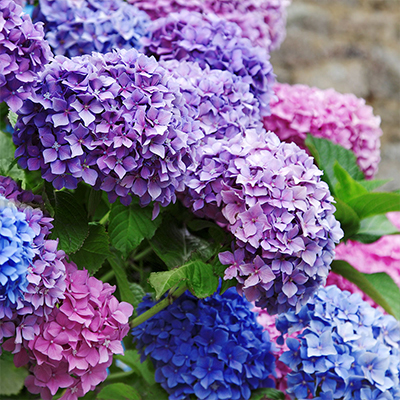How to Divide Perennial Plants

Published January 31, 2024
Dividing perennials is a great way to turn one plant into many free plants for your landscape. Splitting plants helps perennials thrive and it's an easy process.
Popular perennials for dividing include hostas, daylilies, monarda (bee balm) and Siberian iris. The best time to divide most spring and early summer flowering perennials is in fall. Divide late-summer and fall-flowering perennials in spring. In this guide, learn how to divide perennials and plant the new starts in your landscape.
Difficulty:
Beginner
Duration:
2-4 hours
Table of Contents
Benefits and Tips for Dividing Perennials
Dig Up the Root Ball
Break Up the Root Ball
Separate and Plant
Benefits and Tips for Dividing Perennials

Most perennials will need dividing at some point, typically every two to three years to avoid crowded plants competing for nutrients and water. Splitting perennials is necessary to keep perennial plants healthy and lush. Plus, dividing perennials gets two or more plants for the price of one. It's a budget-friendly way to grow your landscape.
Some perennials, like hosta, sedum 'Autumn Joy' and Siberian irises, need frequent dividing to perform their best. Others, like peonies, can go decades without needing any division. You can tell when a plant is ready to split if it develops a dead core in the center of its crown. Also, if the foliage is lush, but the plant produces steadily fewer flowers each year, it's time to divide.
Unsure which perennials need dividing? Here are some tips:
- It's time to divide when you see overcrowding, a clump with an empty spot in the middle or outward falling stems.
- The day before you divide, water the plants and cut foliage back by a third.
- Choose a cloudy day to divide perennials. Plants recover more quickly if the sun isn’t beating down on them.
- If temperatures heat up, shade your perennials with a row cover and frequently water until the roots are established. Dividing can stress the plant.
- Replant new divisions as soon as possible. Plants can sit for a few days out of direct sun, but the longer they are out of the soil, the less chance they have of settling back into your landscape (or someone else’s).
- The best time to divide perennials is in the fall; divide and transplant at least six weeks before the first hard freeze. Avoid moving fall-blooming perennials while they are still in flower. Mark and save these for spring.
Dig Up the Root Ball

Plan to divide perennials on cool days. Just after a rain is ideal, so the ground will be soft. Use a long- or short-handled spade or garden fork to dig up the root ball.
- Loosen the soil around the plant with a garden fork or spade. Depending on your soil and the size of the plant, it may take several passes to loosen the root ball.
- If the plant is small, lift the root ball entirely from the soil.
- For larger plants where lifting the root ball is difficult, remove a portion at a time by slicing through the root ball with the spade and then digging up that portion.
- Leave a portion of the original plant in place.
Break Up the Root Ball

Once you have loosened the root ball, you can:
- Break the root ball into smaller sections with your hands if it's a delicate plant.
- Larger, denser root balls require slicing into sections with a spade or garden knife like a hori-hori. A serrated bread knife reserved for garden use works well, too.
- Very large, dense root balls, such as those of daylilies or Siberian irises, require prying apart with two spading forks. You may even need to use a small hand axe to hack through difficult root balls, but this should be a last resort, since it can damage plants.
- If the perennial plant has a horizontally-growing rhizome or tuber, like bearded iris, dig it up and use a sharp knife or pruning shears to cut it into pieces. Leave at least one bud and some roots on each piece.
Tip: If you break off roots, don't worry. Just make sure each division has some roots attached.
Separate and Plant

Keep a garden trug, galvanized tub or Homer bucket nearby to place perennial divisions while you work.
- Most perennials can be divided into several smaller plants. Replant these sections as desired or give away to friends.
- When replanting in the original spot or filling in where just a portion of the root ball was removed, work in a shovelful or two of compost to improve the soil.
- Replant the divisions at the same depth they were growing.
- Water new plantings well. Continue to water frequently, especially during extreme heat, until established.
Perennial plants are workhorses in your landscape. When you take time to divide them, you get more plants for your garden and extras to share with gardening friends.
Whether you need the right garden tools, soil or plants, The Home Depot delivers
online orders
when and where you need them.



























